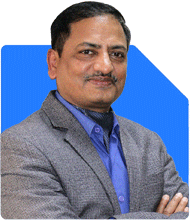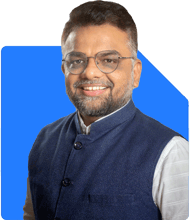Is it wise to continue my 6-year SIP of Rs. 2000 per month?
Ramalingam Kalirajan |10870 Answers |Ask -Follow
Mutual Funds, Financial Planning Expert - Answered on Sep 22, 2024
He has an MBA in finance from the University of Madras and is a certified financial planner.
He is the director and chief financial planner at Holistic Investment, a Chennai-based firm that offers financial planning and wealth management advice.... more

I am already invest SIP last 6 years Rs. 2000 per month. Should I continue the policy or close it.
Benefits of Staying Invested
If your SIP is in well-performing funds, continuing can offer significant long-term advantages. Since you are investing for six years already, the compounding effect will start showing better results in the upcoming years.
Here are some reasons to continue:
Rupee Cost Averaging: SIPs ensure that you buy more units when markets are low and fewer units when markets are high. This helps in averaging your costs over time and minimizes the impact of market fluctuations.
Power of Compounding: Staying invested for the long term allows your money to grow exponentially as returns are generated on both your principal and your earlier returns.
Tax Efficiency: If your SIP is in an equity mutual fund, the long-term capital gains tax on profits is lower, and after holding for over one year, you will benefit from tax efficiency.
Long-Term Financial Discipline: Regular investments help build financial discipline, and a six-year SIP shows your commitment to building wealth in a systematic way.
So, if your SIP is aligned with your financial goals, it’s wise to stay invested for a longer period.
Factors to Consider Before Closing the SIP
Before deciding to close your SIP, here are a few factors to review:
Fund Performance: Has your mutual fund consistently underperformed compared to its peers or benchmark? If yes, you may want to switch to a better-performing actively managed fund, but not close the SIP entirely.
Current Financial Situation: Are you in a financial crunch or expecting significant expenses in the near future? If your financial situation has changed, pausing the SIP might be an option.
Market Conditions: If the markets are volatile or bearish, exiting now could lock in losses. SIPs are designed to handle such volatility over time, so exiting due to short-term downturns may not be ideal.
Reviewing these factors will provide you with a clearer direction on whether you should stay invested or pause.
Importance of Reviewing Fund Performance
As a Certified Financial Planner, I recommend that you periodically review the performance of your mutual funds. Here's why:
Consistent Underperformance: If your fund has underperformed its benchmark consistently for over 2 years, it may be time to switch. Moving to an actively managed fund could yield better results in the long run.
Fund Manager Changes: A change in the fund manager or investment strategy can impact the future performance of the fund. Make sure you stay updated on these changes.
Peer Comparison: Compare your mutual fund’s performance with similar funds in the same category. If it lags far behind, explore better-performing funds.
If you find underperformance, don’t immediately close your SIP. Instead, consider switching to a better-performing actively managed mutual fund.
Disadvantages of Index Funds and Direct Funds
You should also avoid switching to index funds or direct mutual fund plans. Here’s why:
Index Funds: While index funds mirror the performance of an index, they don’t beat the market. They merely track it. If the market underperforms, so will the index fund. Moreover, in a volatile market, actively managed funds tend to outperform index funds because professional fund managers make timely decisions based on market conditions.
Direct Funds: These funds lack the expertise and advice provided by a Certified Financial Planner (CFP). Although they might have lower fees, the absence of personalized guidance can lead to poor financial decisions, which can cost more in the long term.
Actively managed mutual funds, overseen by professional fund managers, provide an edge over these options by leveraging expertise to outperform the market.
Diversifying Your SIP Portfolio
If your current SIP is in a single fund or category of funds, it’s essential to diversify for better risk management and returns. Consider the following:
Large-Cap, Mid-Cap, and Small-Cap Funds: Diversifying across market capitalizations helps balance risk. Large-cap funds offer stability, while mid- and small-cap funds provide higher growth potential.
Sectoral or Thematic Funds: While these funds can offer higher returns, they are riskier as they are focused on specific sectors. It’s better to allocate only a small portion of your portfolio here.
Debt Funds: If you are looking for stability, you can allocate a part of your SIP to debt funds. They provide consistent returns, though lower than equity funds.
By diversifying your SIP, you spread your risk while maximizing returns. Ensure the new funds align with your long-term financial goals.
SIP Continuation and Goal Alignment
You should also reassess whether your SIP aligns with your financial goals. At 45, you may be approaching certain life milestones, such as retirement planning, children’s education, or creating an emergency corpus. Here’s how to align your SIP:
Retirement Corpus: If you’re aiming to build a retirement corpus, staying invested for 10-15 years is a good strategy. Equity mutual funds are known to outperform other asset classes over the long term, helping you achieve this goal.
Children’s Education: If you are saving for children’s education, your SIP should be allocated toward a balanced or equity-oriented fund that provides moderate to high returns in 5-10 years.
Emergency Fund: SIPs are not the best option for emergency funds. Instead, liquid mutual funds or fixed deposits are better suited for immediate liquidity needs.
Ensure your SIP is serving your financial objectives effectively.
Balancing SIP and Lumpsum Investments
Since you’re already investing through SIP, you might also want to explore balancing it with a lumpsum investment. SIPs are beneficial for regular investments, but a lumpsum investment at the right time can accelerate wealth creation. For example:
Market Timing: Investing a lumpsum during a market correction can help you buy more units at a lower cost, boosting returns when the market recovers.
Goal-Based Lumpsum Investment: If you have a specific financial goal, such as buying a house or funding your children’s education, you can invest a lumpsum in a suitable fund that matches the timeframe of your goal.
However, avoid relying entirely on lumpsum investments, as SIPs provide the advantage of disciplined investing over time.
Building a Comprehensive Investment Strategy
Instead of merely continuing or closing your SIP, consider creating a more comprehensive investment strategy. Here are some steps to follow:
Review Current Investments: Examine all your existing investments, including your SIP, savings, and other assets. Ensure they are well-diversified and aligned with your financial goals.
Risk Profile Assessment: Assess your risk tolerance based on your age, income, and responsibilities. If you have a high risk tolerance, equity funds can dominate your portfolio. If you are risk-averse, include more debt funds or hybrid funds.
Set Clear Financial Goals: Define short-, medium-, and long-term financial goals. These could include retirement, children’s education, or buying property. Each goal should have a corresponding investment strategy.
Regular Review and Rebalancing: Continuously review your portfolio’s performance and rebalance it every year. Ensure it remains in line with your risk profile and financial goals.
Finally
Continuing your SIP depends on how it aligns with your long-term goals and the fund’s performance. Staying invested for 10-15 years can unlock the full potential of compounding. However, ensure you periodically review the fund and consider diversifying into other categories if necessary. Avoid index funds or direct mutual fund plans, as actively managed funds offer better growth potential over time.
Best Regards,
K. Ramalingam, MBA, CFP,
Chief Financial Planner,
www.holisticinvestment.in
Instagram: https://www.instagram.com/holistic_investment_planners/
You may like to see similar questions and answers below
Omkeshwar Singh | Answer |Ask -Follow
Head, Rank MF - Answered on May 30, 2022
Ramalingam Kalirajan |10870 Answers |Ask -Follow
Mutual Funds, Financial Planning Expert - Answered on May 29, 2024
Sanjeev Govila | Answer |Ask -Follow
Financial Planner - Answered on Nov 15, 2023
Ramalingam Kalirajan |10870 Answers |Ask -Follow
Mutual Funds, Financial Planning Expert - Answered on May 30, 2024
Vivek Shah | Answer |Ask -Follow
Financial Planner - Answered on Apr 19, 2024
Dr Dipankar Dutta |1836 Answers |Ask -Follow
Tech Careers and Skill Development Expert - Answered on Dec 05, 2025
Ulhas Joshi |280 Answers |Ask -Follow
Mutual Fund Expert - Answered on Dec 05, 2025
Dr Dipankar Dutta |1836 Answers |Ask -Follow
Tech Careers and Skill Development Expert - Answered on Dec 04, 2025
Ravi Mittal |676 Answers |Ask -Follow
Dating, Relationships Expert - Answered on Dec 04, 2025
Anu Krishna |1745 Answers |Ask -Follow
Relationships Expert, Mind Coach - Answered on Dec 04, 2025
Anu Krishna |1745 Answers |Ask -Follow
Relationships Expert, Mind Coach - Answered on Dec 04, 2025
Mayank Chandel |2562 Answers |Ask -Follow
IIT-JEE, NEET-UG, SAT, CLAT, CA, CS Exam Expert - Answered on Dec 04, 2025
Mayank Chandel |2562 Answers |Ask -Follow
IIT-JEE, NEET-UG, SAT, CLAT, CA, CS Exam Expert - Answered on Dec 04, 2025
Mayank Chandel |2562 Answers |Ask -Follow
IIT-JEE, NEET-UG, SAT, CLAT, CA, CS Exam Expert - Answered on Dec 04, 2025
Mayank Chandel |2562 Answers |Ask -Follow
IIT-JEE, NEET-UG, SAT, CLAT, CA, CS Exam Expert - Answered on Dec 04, 2025



























